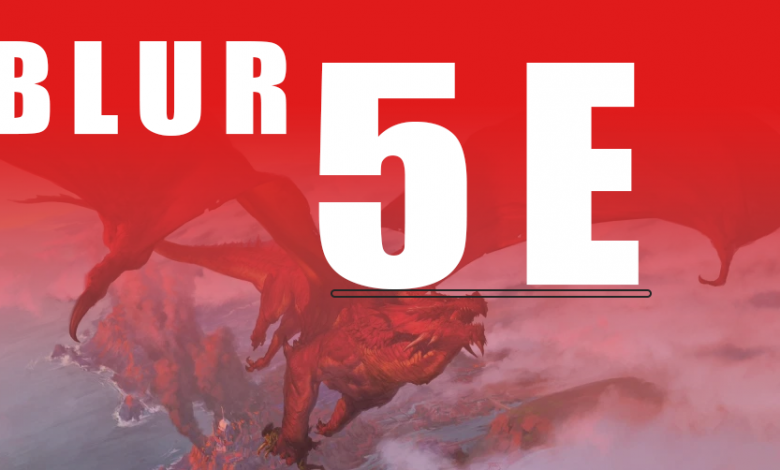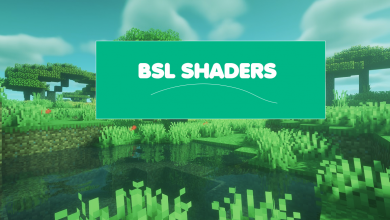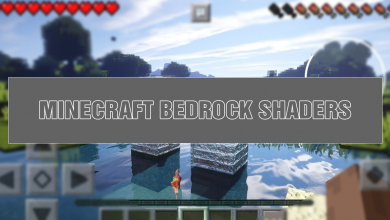Everything You Need to Know About Blur 5e

About Blur 5e
Blur 5e is a common druid spell that makes the caster or another target more difficult to hit for an extra 1d10 damage. It makes the target’s image extremely blurry. Thus they are harder to see. For this reason, it can also be seen as a defensive effect because it does not state that you have to take a hit to have the effect take place. The person using this spell would be able to use it themselves or cast it on another person, which would make them less likely to be targeted by a foe.
Different Skills for Players: Blur 5e
To escape from being hit, players can use several different skills to reduce the chance of taking damage from an opponent. Blur 5e is one of these skills that reduce the possibility of getting hit either for oneself or for another creature that you can see. For example, if someone were casting a fireball toward two people and both had to blur cast on them. Players may miss one person entirely or maybe even wholly miss both people while destroying a part of their surroundings instead. If the caster only had the option of hitting one person and they both had Blur, then the fireball would most likely hit the person who is closer and easier to see.

Blur 2nd-level Illusion
For the duration of this Concentration, any creature you attack has a disadvantage on attacks. An attacker does not rely on sight, such as with Blindsight. You become harder to pinpoint, allowing you to move more easily undetected. Suppose the attacker can see through illusions, such as with Truesight. It is immune to this effect. Blindsight relies on sight, so the attacker is immune to this effect.
Blur 5e can also be used to escape or hide from something chasing you or trying to find you. The spell states that any creature has a disadvantage on attack rolls against you for the duration, which means that you have a higher chance of not being hit. A man wanted to escape from a group of ogres. He had been angered by stealing one of their magical items. Killing some of their people along the way. He cast Blur on himself and ran into a forest where many trees would block his current position from the ogres chasing him. The ogres then split up into smaller groups to look for the man. He cast Blur 5e again and ran deep into the forest where he could not be found.
The range of the spell is fifteen feet from high levels. For every two slots above 3rd level, up to a maximum of 75ft at 9th level. Whenever you use a five-level or higher slot, you can target one more creature for every four-level slot above. The distance must be in the range of thirty feet within the creatures. The spell ends if you use any action, bonus action, or reaction between the included actions, whether an attack action, a spell attack roll, casting a spell to cast a magic missile, etc.
Material:
A powder composed of semi-precious ground stone and crushed herbs that give off a pungent odour when burned. Its particular colour must be the same as your eyes while you cast this spell.
Components:
V, S, M (a powder), F (an eye)
Comparison Between Blur, Mirror, and Blink
Whether it be in your tabletop game or when watching a gamer’s highlight reel on YouTube. You have probably seen a clever character use an illusion spell to create images of themselves. An entire party attacking only 1/4 of the enemy party sounds pretty overpowered. You’ll find out by comparing a few staple spells in 5e:
Blur
An invisible barrier appears and protects you. Until the start of your next turn, you have a +10 bonus to AC, including against the triggering attack, and you take no damage from the magic missile.
Mirror Image
Three illusory duplicates appear in your space. Duplicate Image Statistics Image HP AC Strength Dexterity Hit Points INT Damage Immunities Condition Immunities Blinding Speed 30 15 18 13 5 11 13 5 4 Etheralness 60 30 13 18 10 17 8 15 9
Blink
Components: V, S, M (a pinch of wool or similar substance)
Duration: 1 minute
On a roll of 11 or higher, If you are on the Ethereal Plane, you return to an unoccupied space of your choice that you can see within 10 feet of the space you vanished from.
Wizard
Blur 5e vs Mirror Image vs Blink: The Wizard’s version of the illusion spells make it very difficult for an enemy to land any hit against them (if not impossible) while creating fake versions of themselves, which brings some severe survivability up.
However, even with good AC, all those missed attacks will eventually add up and do significant damage to the Wizard if something isn’t done. Whether it’s taking advantage of their ethereal state or just making sure to take cover, finding ways around this drawback is essential.
Mirror Image: This spell does not increase their AC nearly as much, but they can soak up more damage than Blur by themselves at three images. The only real drawback here is keeping them in line with whatever the player is doing (unless they are willing to keep casting).
Blink: Not giving any AC bonus makes blink a better early-level utility spell, and that, combined with its high speed and ability to avoid combat altogether, makes it a low-risk choice.
Difference Between Blur and Blink
The main difference between the two is the number of times you can use them. ‘Blur’ allows you to cast it once per long rest, while ‘Blink’ can be used multiple times before needing a long rest (minimum 1). This means that if an enemy attacks you more than once every 10 minutes, then Blink is better for you than Blur.
When the character is attacked by particular creatures or spells that hit for about 7-8 damage on average. With slightly above average strength and skill modifiers. These comparisons are all made under the assumption that I armored and unencumbered.
‘Blur’: If an attack strikes me, all damage is reduced to 1. Additionally, if the attack was successful, but it would have missed. You have not been in the path of the creature’s strike (i.e., it rolled a natural 20, and my AC was better than 20). Then my attacker will ‘flinch.’ This means that they cannot move or make attacks of opportunity on their turn. Lose any bonus actions or reactions they may have taken.
‘Blink’: This spell has 2 parts: you gain resistance to all damage for this round as well as your next two rounds (effectively making you immune to weapons with this spell up), and then you teleport 10 feet peruse of the spell in this manner. This means I can blink up to 3 times peruse of the spell without requiring a rest.
Summary
Blur is a spell that can be used as both an offensive and defensive option, depending on how players use it in a scenario. It has a few limitations and many benefits that can make it come in handy in certain situations. The spell will give the player an advantage over any creature trying to attack you and suggest that they cannot aim at your position accurately.
Apart from this, if you are interested to know about Are you able to move through the space of the Guardian of Faith 5e spell? then visit our Gaming category.





